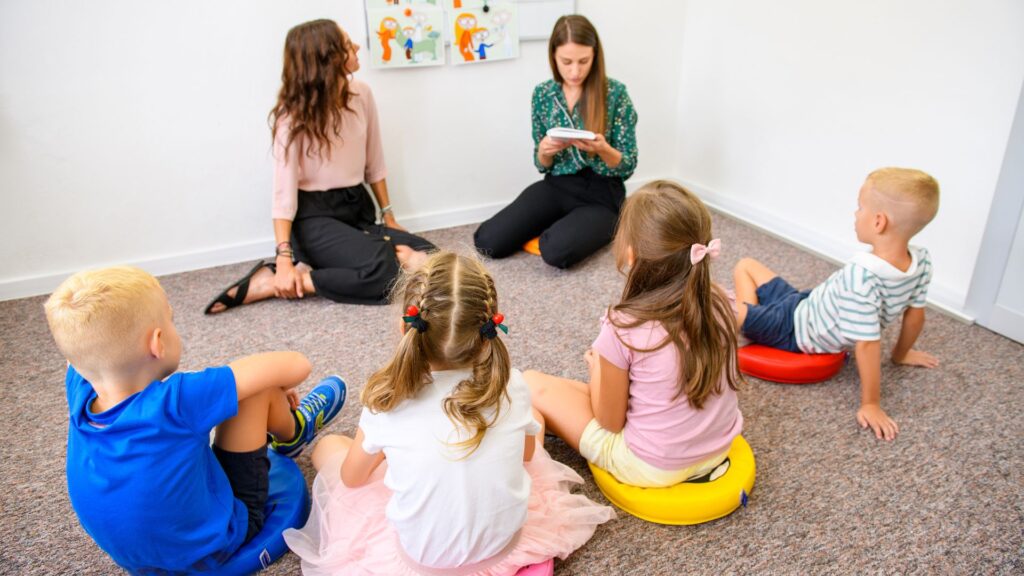Children often face a multitude of emotions and challenges as they navigate the complexities of growing up. From academic pressures to social dynamics and family changes, their young minds can be overwhelmed by feelings they may not fully understand or know how to express. Enter play therapy, a specialized form of therapy tailored specifically to meet the unique needs of children. In this approach, play becomes the language through which children communicate their thoughts, feelings, and experiences. By engaging in play activities under the guidance of a trained therapist, children are provided with a safe and supportive environment to explore and express themselves freely. Through play therapy, children learn to process their emotions, develop problem-solving skills, and build resilience in the face of challenges. In this blog series, we’ll delve deeper into the world of play therapy, exploring its benefits, techniques, and real-life success stories of how it helps children thrive emotionally and socially.
Tools for Supporting Children’s Emotional Well-being

Play therapy is a valuable therapeutic approach that utilizes play to help children express their thoughts, feelings, and experiences in a safe and supportive environment. Through various techniques tailored to their developmental needs, children can explore and work through emotional challenges, trauma, and difficult life circumstances. In this article, we’ll delve into some key play therapy techniques used by trained therapists to support children’s emotional well-being.
- Sand play Therapy: Sand play therapy involves using a tray filled with sand and a collection of miniature figures and objects. Children are encouraged to create scenes or worlds in the sand, which can represent their inner thoughts and emotions. Through this process, they can externalize and process their experiences in a non-verbal way, making it particularly effective for children who may struggle to express themselves verbally.
- Art Therapy: Art therapy allows children to express themselves creatively through various art mediums such as drawing, painting, and sculpting. By engaging in artistic activities, children can communicate their feelings and experiences symbolically, which can be less intimidating than verbal communication. Art therapy also provides a tangible representation of their emotions, enabling therapists to gain insights into their inner world.
- Role-Playing: Role-playing allows children to explore different roles and scenarios, helping them understand and process complex emotions and social interactions. Through role-playing, children can practice problem-solving, empathy, and perspective-taking skills in a safe and controlled environment. Therapists may use puppets, dolls, or other props to facilitate role-playing activities tailored to each child’s needs.
- Storytelling and Narrative Therapy: Storytelling and narrative therapy involve creating and sharing stories that reflect the child’s experiences, feelings, and aspirations. Through storytelling, children can externalize their inner struggles and gain new perspectives on their challenges. Therapists may use books, improvised stories, or guided storytelling techniques to engage children in the therapeutic process and help them make sense of their experiences.
- Play Therapy Games: Play therapy games are structured activities designed to promote emotional expression, problem-solving, and social skills development. These games can range from board games and card games to interactive exercises tailored to the child’s specific needs and goals. Play therapy games provide a structured framework for therapeutic play while encouraging collaboration, communication, and emotional regulation.
Strategies for Supporting Your Child’s Emotional Health

Parenting can be both rewarding and challenging, especially when it comes to supporting your child’s emotional well-being. Incorporating elements of play therapy into your parenting toolkit can provide valuable tools and strategies for nurturing your child’s emotional health. In this article, we’ll explore practical ways parents can integrate play therapy techniques into their interactions with their children to promote emotional resilience and well-being.
Create a Safe and Supportive Environment
One of the fundamental principles of play therapy is providing a safe and supportive environment for children to express themselves freely. As a parent, you can create this environment at home by establishing open communication, active listening, and unconditional acceptance. Encourage your child to express their thoughts, feelings, and experiences without fear of judgment or criticism.
Embrace Playfulness
Incorporating playfulness into your interactions with your child can foster emotional connection and trust. Set aside dedicated time for unstructured play where you can engage in imaginative play, storytelling, or creative activities together. Allow your child to take the lead and follow their cues, letting their imagination and creativity flourish.
Use Play to Explore Emotions
Play provides a natural avenue for children to explore and express their emotions. Use toys, dolls, or puppets to create scenarios that reflect your child’s feelings or experiences. For example, if your child is feeling anxious about starting school, you can use dolls to act out different scenarios and discuss their fears and concerns in a safe and playful way.
Practice Active Listening
Listening attentively to your child’s words and non-verbal cues is essential for building trust and understanding. Practice active listening by giving your child your full attention, maintaining eye contact, and reflecting back their feelings and experiences. Validate their emotions and let them know that their thoughts and feelings are valued and respected.
Encourage Creative Expression
Artistic activities such as drawing, painting, or sculpting can be powerful tools for emotional expression and processing. Provide your child with art supplies and encourage them to create artwork that reflects their emotions or experiences. Use the artwork as a springboard for meaningful conversations about their feelings and how to cope with challenges.
Conclusion
Establishing practical cleaning routines tailored to the busy lifestyles of Libertyville residents is essential for transforming chaotic living spaces into havens of calm and tranquility. By prioritizing daily maintenance, creating weekly cleaning schedules, and embracing the power of decluttering, individuals can reclaim control over their environments and promote a sense of well-being amidst the hustle and bustle of daily life. With community support and the willingness to enlist help when needed, even the busiest of residents can achieve a clean and organized home that fosters peace and contentment. So Clean Schaumburg, located in Hoffman Estates, Illinois, provides a valuable resource for those seeking assistance in maintaining a clean and healthy living environment, ensuring that residents can focus on what matters most while leaving the cleaning to the experts.


